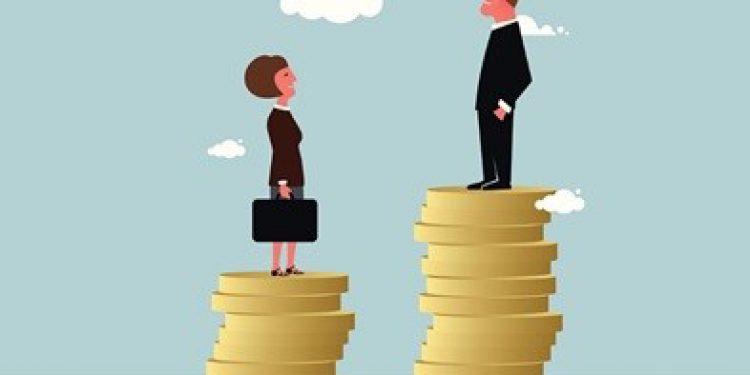 Guest blog by Jacqueline Heron
Guest blog by Jacqueline Heron
In the beginning
With one of the widest gender pay gaps in Europe, in 2015 David Cameron set out to end this ‘scandal’ within a generation. In 2018, Theresa May said she wanted her government to end the ‘burning injustice’ of the gender pay gap. As a first step, organisations with over 250 employees published the gap in hourly pay between men and women on April 4th 2018. This will be an annual exercise.
It’s somewhat of a blunt instrument. A company might have a gender pay gap if a majority of men are in top jobs, despite paying male and female employees the same amount for similar roles – and there’s no adjustment for employees’ different roles, so CEOs are compared directly with PAs. Gaps can be skewed by a few high-earners.
However, everybody’s talking about it – from Boardroom to shareholders to customers and employees. And what’s clear is that most of the UK’s medium and large organisations pay women significantly less than men, and that there aren’t enough women in top paying jobs. No surprises there but it’s useful to have it in black and white. And what we’re seeing so far, is that many organisations are recognising that this isn’t good enough and are publishing the actions they plan to take start closing those gaps. Since this will be an annual exercise, we can monitor their progress. It’s a case of ‘what gets measured, gets done.’
The results are in
Of the 10,019 firms that submitted gender pay gap data only 2,255 (22.5%) have a median women’s hourly wage that is equal to or higher than that of men. The remaining 7,764 (77.5%) pay women less than men. Across the UK, men earned 18.4% more than women in April 2017, according to the Office for National Statistics (ONS).
It impacts all industries: The construction sector reported the worst average median gender pay gap at 25%. This was followed by finance and insurance at 22% and somewhat surprisingly, education, with a pay gap of 20%.
And the gender pay gap becomes the gender pension gap
Older women are disproportionately affected, with those in their 50s experiencing an 18.6% pay gap, compared to 5.5% for women in their 20s. This worsens as they reach pension age. HMRC data has shown the gap between the amount of pension income received by men and women is widening. Women received just 37% of the total amount of income drawn from pensions last year, down from 39% in 2012-2013. Last year, women received £46.5bn in pension income, while men received £79.3bn.
The reasons are complex
Most industries fail to promote enough women. This is a global issue. McKinsey’s found that, whereas half of graduate entrants in American law firms were women, only one in five equity partners was. A study by SKEMA Business School in France found that, although women made up 52% of banking employees globally, only 38% of middle managers and 16% of executive committee members were women.
Men’s and women’s salaries start diverging from the childbearing years. Women pay a significant financial penalty for being parents. They may also play a non-parental care role – unpaid work looking after relatives, partners or friends with illnesses or disabilities. As a result, they are more likely to work in part time roles which are often lower paid with fewer opportunities for progression.
Structural discrimination plays a part. One in nine new mothers is dismissed, made redundant or treated so poorly that she leaves, according to the Equality and Human Rights Commission. Subtler biases favour men in hiring, performance reviews, pay and promotions. A study in 2016 by Warwick University found that, among workers who asked for pay rises, men were 25% more likely than women to be successful.
As does unconscious bias. Take academia, where studies have shown that unconscious bias comes into play when science faculty members receive applications from students with feminine names, judging women to be less competent and less hireable than a man with an identical CV.
Working towards a solution
Companies should beware of kneejerk reactions and take time to diagnose what lies behind the numbers. They need to look at how they hire, how they pay, how they promote and ask the question: are our practices fair?
The case for diversity demonstrates a positive impact on the bottom line. McKinsey found that companies in the bottom quartile for gender and ethnic diversity in leadership were 29% less likely to achieve above-average profitability. An analysis of the data shows that in companies where women are fairly or slightly overrepresented in the top pay band, the median gender pay gap shrinks relative to the composition of the company as a whole.
Professor Sucheta Nadkarni, Director of the Cambridge Judge Business School Women’s Leadership Centre says: “Whether it is because women are getting paid less for the work that they are doing or because women are not getting equal opportunities to get into positions where the pay level is high – it doesn’t matter what the reason is, but there is a gender pay gap and in most cases it’s an issue of equality and justice. In both cases it’s an issue of an imbalance of some sort.”
We should be using the gender pay gap as a means to an end, focusing not solely on the outcome, but rather the lack of equality in opportunities for women.



 It’s not fair that women get paid less, are passed over for promotion, penalised for having children and criticised for being assertive. Our unhappiness with this state of affairs has been growing since well before women got the vote, 2 centuries ago. Now we are much more in touch with the social and economic cost of being a woman in our society. What we are less aware of is the cost to men.
It’s not fair that women get paid less, are passed over for promotion, penalised for having children and criticised for being assertive. Our unhappiness with this state of affairs has been growing since well before women got the vote, 2 centuries ago. Now we are much more in touch with the social and economic cost of being a woman in our society. What we are less aware of is the cost to men.